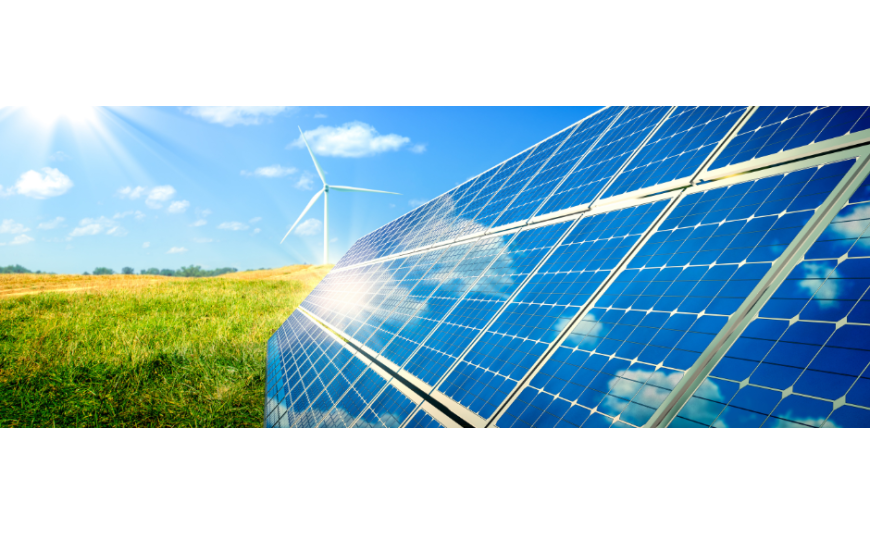What are the different types of photovoltaic cells?
- 21 Jul, 2023
- Help , Photovoltaic , Self-consumption , Our products

Solar panels have become an essential solution for the production of clean, renewable energy. However, with the rapid and constant evolution of technologies in the sector, it can be difficult to find your way around the different options available on the market. In this article, we explain the difference between the different types of photovoltaic cells.
Monocrystalline solar panel: the most efficient
The monocrystalline solar panel, as its name suggests, is created from a single continuous crystalline structure. It is the oldest and most highly developed of the three technologies. This type of solar panel is the most efficient. It uses a special manufacturing technique to make the most of silicon, the basic material. In a monocrystalline panel, very high purity silicon ingots are cut into thin wafers and assembled into a grid. The panel itself appears dark black and each silicon wafer has rounded corners, giving these panels a unique, easily distinguishable appearance. However, the biggest drawback of these monocrystalline panels is their high cost. These high-end panels can be significantly more expensive than other panel varieties, although costs can vary considerably between manufacturers and panel designs.
At I'M Solar we manufacture monocrystalline bi-glass solar panels. Bi glass is a solar panel that ensures the performance of the cells over time. This is why we can guarantee our panels for 30 years. In fact, I'M SOLAR cells show little or no loss of performance over time. Encapsulating the cells between 2 sheets of glass eliminates any static charge that could reduce the performance of the cells. In addition, having 2 sheets of glass makes the panel more rigid and robust. I'M SOLAR bi-glazed panels are all bi-facial, which means that both the front and rear faces of the panel can be produced. If the rear face is used, for example for installation on a flat roof, in a car port or even on a fence, these panels can achieve up to 40% more power.
Polycrystalline solar panels: lower cost
Polycrystalline solar panels are made using molten silicon, which is cast and cut into perfectly square wafers. This melting process uses up almost all the material, eliminating the abundant waste during manufacture.
However, the polycrystalline solar photovoltaic panel is less efficient than the monocrystalline panel because polycrystalline cells are not as resistant to heat. More specifically, they do not produce as much electricity from the sun that illuminates them. What's more, in terms of design, polycrystalline panels also tend to be larger and their shimmering blue colour can be less aesthetically pleasing than thin-film and monocrystalline panels.
Thin-film solar panels: portable and lightweight
You've probably also heard of thin-film solar panels. They are more recent and less frequently used for homes. But they are gaining in popularity. They are designed by depositing layer after layer of a photovoltaic element, such as amorphous or organic silicon photovoltaic cells. Thin-film solar panels have a number of advantages. They are lightweight and generally immune to shading or obstruction problems, and low-light conditions do not generally hinder their performance. They are also easy to mass-produce, making them an affordable option. But they also have a number of drawbacks. In terms of efficiency, the performance of thin-film panels is very low, fluctuating between 7 and 13%, with an average operating efficiency of around 9%. Also, these panels generally require a lot of space. For commercial applications, they often make sense. For most residential installations, where space is at a premium, they don't work. Thin-film panels are also more expensive because you have to buy more support elements, cables, to accommodate the system. What's more, in most cases thin-film panels don't last long and quickly succumb to the effects of the weather. As a general rule, you won't find a manufacturer offering a long-term guarantee associated with a thin-film panel.
Passivity and rear contact emitter solar panel (PERC)
PERC solar panels are an improvement on the traditional monocrystalline cell. This relatively new technology adds a passivation layer to the back surface of the cell that improves efficiency in several ways:
It reflects light back into the cell, increasing the amount of solar radiation that is absorbed.
It reduces the natural tendency of electrons to recombine and inhibits the flow of electrons through the system.
It allows longer wavelengths of light to be reflected. Light waves longer than 1,180 nm cannot be absorbed by the silicon wafers and simply pass through, so they end up heating the metal back sheet of the cell and reducing its efficiency. The passivation layer reflects these higher wavelengths and prevents them from heating the back sheet. PERC panels allow greater solar energy collection in a smaller physical footprint, making them ideal for limited spaces. They are only slightly more expensive to produce than traditional panels, due to the extra materials required, but they can be manufactured on the same equipment and can end up having a lower average cost per watt due to their efficiency.
The choice of solar panel will depend on your objectives, your budget and the space available. Whatever your choice, opting for solar energy is a step in the right direction towards helping to preserve our planet. Let's not forget that every small gesture counts in the fight against climate change, and adopting solar energy is a concrete way of becoming an agent of change towards a more sustainable and environmentally-friendly future. Find out more about our solar panel offers and online simulator to get a quick and easy quote.




